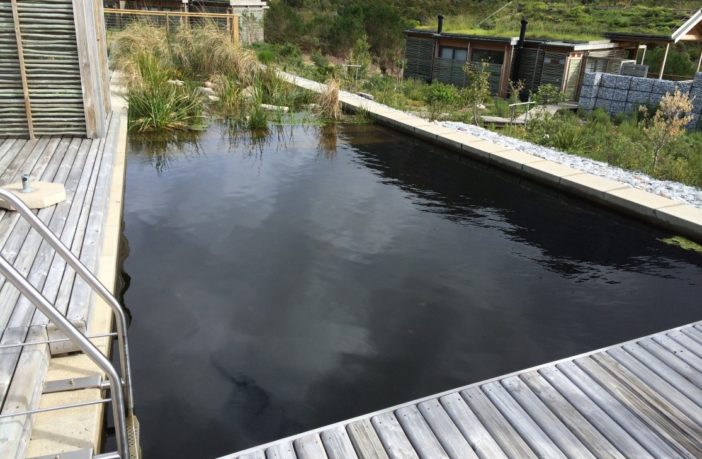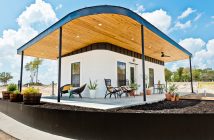With climate change a reality and water becoming a scarce resource, consider a natural pool for your home. Natural pools are chemical free and will save you money in the long run. The design can be a conventional tiled pool with clean lines or take a more natural, earthy theme.
There are two main sections to a natural pool. The regeneration zone works much like your conventional filter except it uses plant wetland and gravel to filter water for the swimming zone section.
Much like a natural rock or stream pool, clean water slowly flows from the shallower planted regeneration zone into the swimming zone. The regeneration zone’s size and depth are related to the volume of clean water needed for the swimming zone. The regeneration zone relies on the surface area of the plants’ roots and the gravel substrate to create a home for beneficial bacteria that ensures that water is kept clean.
A landscape architect can assist in selecting the right variety of plants and gravel for the regeneration zone. The selected plants depend on the climate and location; generally, three types of aquatic plants are used:
- Emergent: Occupying the water margins of the pool; they include sedges, rushes, and grasses
- Submerged: Are rooted into the substrate and help oxygenate the water
- Floating: Including flowering species of the lotus and water lily
Natural pools still rely on a reticulated pump system and it is important that the water is not stagnant for long periods. Daily maintenance is similar to that of a traditional pool, but the focus is on tending the water garden. There is a skimmer between the regeneration zone and the swimming section – this does need to be cleared of debris every so often. The plants will need trimming or replacing from time to time but this can form part of one’s overall garden maintenance.
The costs of a natural pool is roughly the same per square meter as a conventional pool however, a natural pool tends to be larger because of the regeneration section. The maintenance costs and effort are similar but the kicker with natural pools is there are no chemical costs over the life of the pool plus much timed is saved by not having to balance water chemistry.
It is important that the design is practical for easy maintenance access and incorporates the existing natural features of the space available. The idea is to have a natural backyard-oasis that flows from your living areas. Natural swimming pools also welcome nature to join in on the fun. Wildlife like birds, insects and frogs will be visiting but will generally stay clear of the swimming zone.
Author: The Building Whisperer











